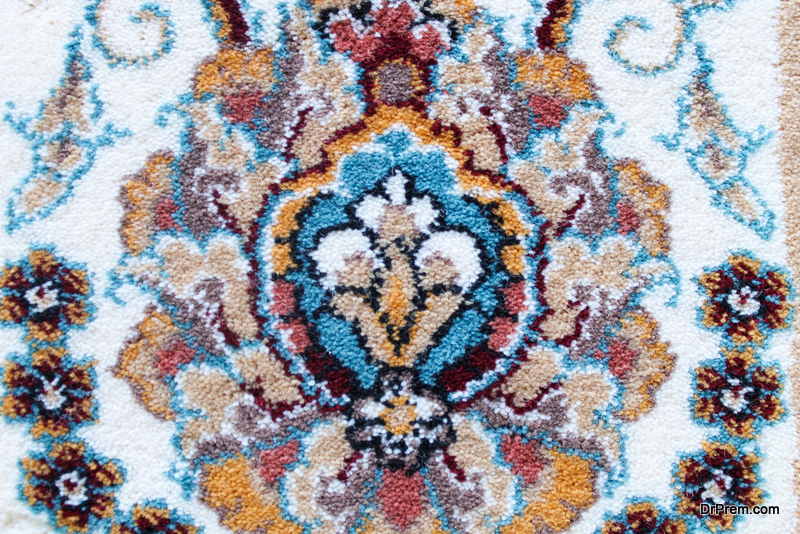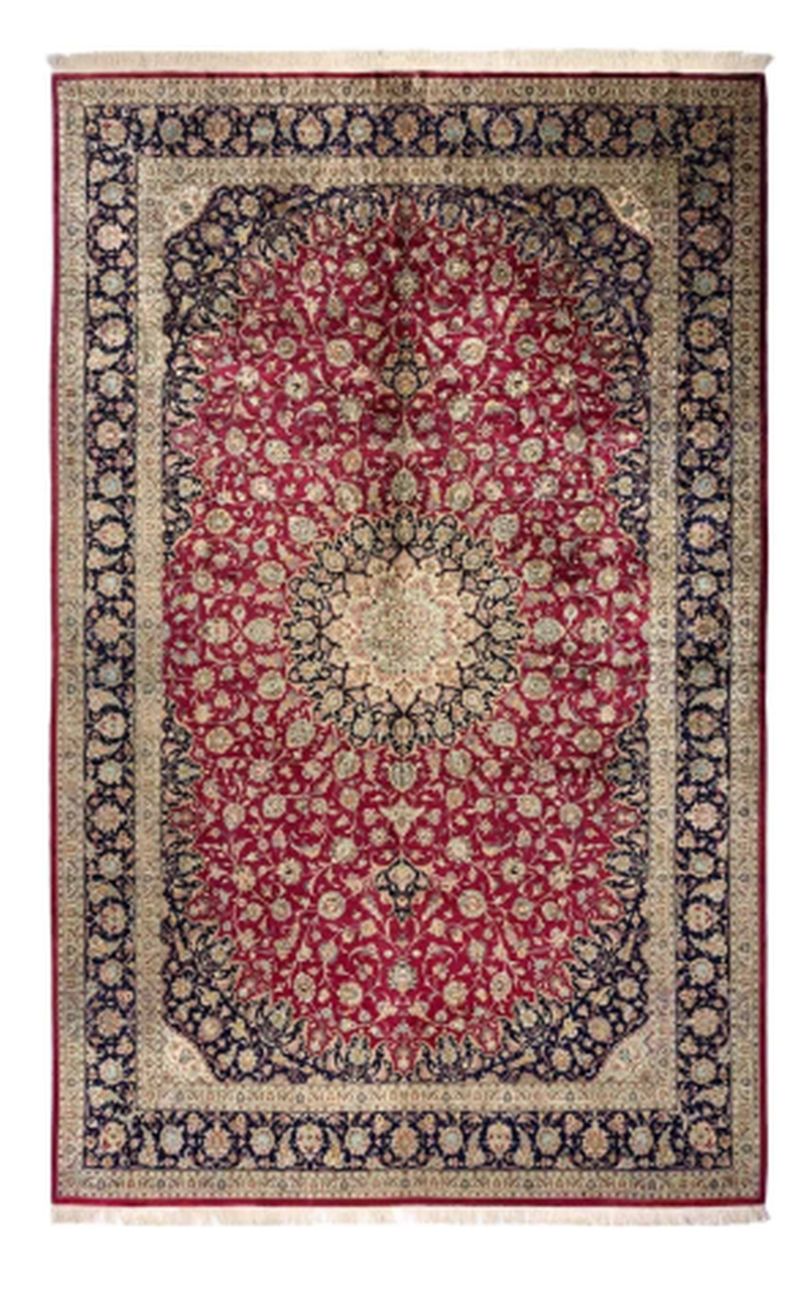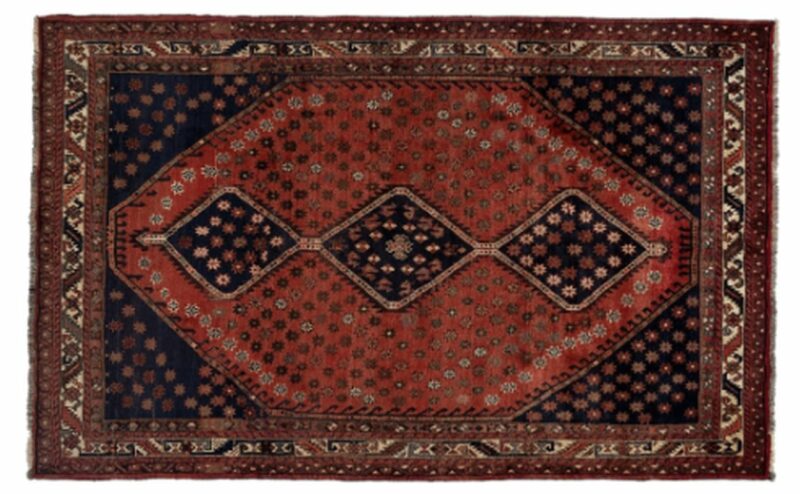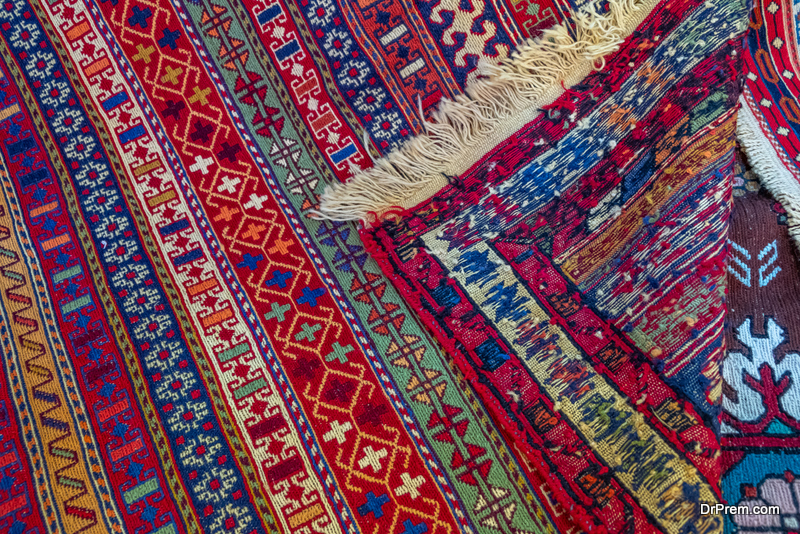Persian carpets are part of the tradition of Iran, ancient Persia, being a demonstration of Persian culture dating back to the Bronze Age. However, Persian carpets and rugs are now regarded as luxury items. It has nothing to do with their modest beginnings when nomadic tribes used them to protect themselves during icy winters.
From then on, they became a path of artistic expression linked to freedom since their manufacturers had to select the most appropriate colours and motifs. Persian carpets are characterized by the presence of vivid colours and motifs inspired by nature, designs made under a precise technique that has passed from generation to generation. Today, these pieces continue to be a luxurious item, with an important role in current and future decoration trends. That is why it is essential to know how to recognize an authentic Persian carpet. Would you be able to identify one?
Keys to recognizing a Persian carpet:
1. Place of origin
 To identify a Persian carpet, a first step may be to check the place of origin. If the piece is knotted in Iran, it means that the rug is authentically Persian. If its origin is from another source such as Turkey, Afghanistan, Pakistan, India, or Nepal, it would not be a Persian carpet, but an “Oriental carpet”.
To identify a Persian carpet, a first step may be to check the place of origin. If the piece is knotted in Iran, it means that the rug is authentically Persian. If its origin is from another source such as Turkey, Afghanistan, Pakistan, India, or Nepal, it would not be a Persian carpet, but an “Oriental carpet”.
2. Manufacturing Method
The manufacturing method also determines the authenticity of a rug or carpet. Handcrafted carpets are made in a loom where the design is developed, manually knotting strand by strand. This procedure is slow and can sometimes take months or even years to complete. On the other hand, if the process is completed by machine, the job can be completed within a few hours.
3. Fringes
 Closely observing the fringes will also help us determine whether the carpet has been made by hand or by machine. In handcrafted pieces, fringes are part of the surface, as they are the continuation of the warps or vertical threads used in looms and on which the carpet is knotted or woven. In contrast, machine-made parts have fringes that have been sewn on after the carpet is made.
Closely observing the fringes will also help us determine whether the carpet has been made by hand or by machine. In handcrafted pieces, fringes are part of the surface, as they are the continuation of the warps or vertical threads used in looms and on which the carpet is knotted or woven. In contrast, machine-made parts have fringes that have been sewn on after the carpet is made.
4. Materials used
Another key that will help us distinguish a Persian carpet is the materials used for their manufacture. The primary raw materials in this type of piece are wool, silk, and cotton. Wool and silk are usually the main materials employed when making carpets. Sheep’s wool is the most used (specifically long fibre wool, which is extracted from the pallets and sides of the animal), although lamb wool is also of particular importance. The wool of the neck and chest of animals is usually the softest as it is very protected from cold weather.
5. Machine-Crafted Vs. Hand-Knotted
 Machine-crafted carpets have exact measurements. In hand-knotted rugs, there are variations in sizes. They can have small deformations or ripples caused by the loom’s tension, and the knots made by the craftsman are also sometimes irregular. To verify if a carpet is handcrafted, it is recommended to always look at the back. In genuine oriental carpets, conversely, the design is seen as sharp as on the top side, but it is unclear in mechanical carpets. In an artisan piece, the drawings can present differences in shape and size; they are always accurate in a mechanical piece. If the carpet is crafted, it will have handmade side trims. On the machine-made rugs and carpets, the sides are also machine made.
Machine-crafted carpets have exact measurements. In hand-knotted rugs, there are variations in sizes. They can have small deformations or ripples caused by the loom’s tension, and the knots made by the craftsman are also sometimes irregular. To verify if a carpet is handcrafted, it is recommended to always look at the back. In genuine oriental carpets, conversely, the design is seen as sharp as on the top side, but it is unclear in mechanical carpets. In an artisan piece, the drawings can present differences in shape and size; they are always accurate in a mechanical piece. If the carpet is crafted, it will have handmade side trims. On the machine-made rugs and carpets, the sides are also machine made.
These key factors will help you distinguish a Persian or oriental carpet from other carpets. But in addition to these elements, price is a good indicator of the carpet’s quality and origin. The size and density of the knots and the perfection and difficulty of the designs greatly influence the price. If in doubt, consider it essential to ask an expert
Article Submitted By Community Writer




